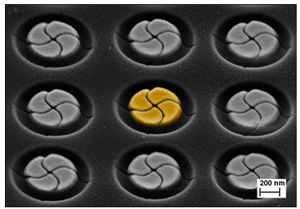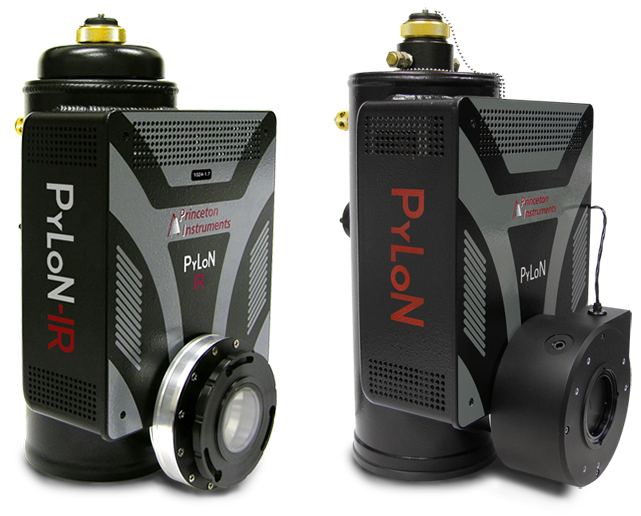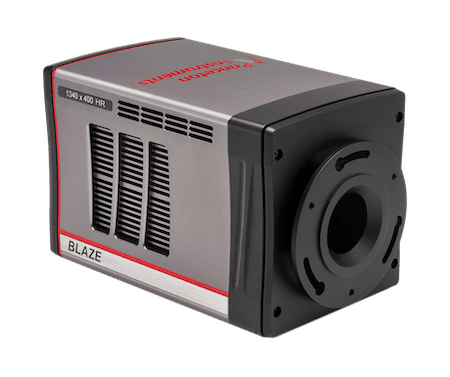Surface-Enhanced Raman Spectroscopy (SERS)
SERS is a phenomenon caused by interacting a laser beam with molecules adsorbed on certain surfaces, such as silver or gold, causing an enhancement of 5-6 orders of magnitude in Raman signal. One theory is that the interaction of the laser beam with irregularities on the metal surface excites conduction electrons leading to a surface plasmon resonance and a strong enhancement of electric field.
However, SERS spectra can be difficult to interpret since the normal Raman spectrum of a molecule is not necessarily the same as that same molecule adsorbed onto a SERS substrate. To try and combat this, surface-enhanced resonance Raman spectroscopy (SERRS) has been developed.

Spectrometers for SERS
IsoPlane
The IsoPlane offers high signal-to-noise ratio, with high spectral resolution and imaging performance to ensure almost perfect capture of information from SERS.
The IsoPlane provides twice the light-gathering power in comparison to typical Czerny-Turner spectrographs, ensuring complete detection of SERS signal. This produces sharper images and improved resolution, ensuring all peaks within the resulting spectra are distinguished without the need for post-processing techniques.
With a unique optical design, the IsoPlane completely eliminates astigmatism across the focal plane. This offers multichannel capabilities to obtain broad range spectral information. As SERS is an analytical technique, a broad spectral range is essential to determine the chemical composition of samples.


TriVista
SERS is a technique that requires ultimate precision. The TriVista offers superb resolution, and high-quality imaging alongside stray light suppression. As SERS is used to enhance the Raman signal of a sample, any stray light present will compromise signal and effect results.
The TriVista is a set of three spectrometers comprised of the SpectraPro family spectrometers. This offers high flexibility without reducing performance, operating from 200 – 2200 nm. The TriVista is also able to capture Raman spectra as close as 5 wavenumbers from the Rayleigh line, essential for high resolution SERS.
Cameras for SERS
PIXIS
SERS Raman spectroscopy in the visible light region requires high sensitivity in the 120-1100 nm range. The PIXIS offers >95% quantum efficiency over this range with reduced read noise.
To obtain all compositional information from a sample, especially when separation between surface coating and sample is required as with SERS, it is essential that long exposure experiments do not result in high dark current. The PIXIS comes equipped with deep cooling resulting in ultra-low dark current over long exposure times, ideal for low-light SERS spectroscopy.
As Raman spectroscopy of different samples requires different parameters, the PIXIS offers front-illuminated, back-illuminated and back-illuminated deep-depletion options to ensure capturing of full spectral information.


PyLoN Family
The PyLoN family is a set of cryogenically cooled CCD and InGaAs cameras, offering extremely low noise essential for the high resolution Raman spectroscopy associated with SERS. As SERS enhances signal it also enhances any noise associated, so therefore requires a CCD with low dark current levels and reduced read noise – as provided by the PyLoN family.
The PyLoN family also provides flexible readout speeds, enabling both high spectral speeds (<6600 spectra/sec) or low read noise dependent on the specific SERS sample, ranging from 50 kHz – 4 MHz.
The PyLoN IR is essential for ultra-low noise near-infrared and SWIR spectroscopy, ideal for SERS samples scattering in the spectral range of 800-2200 nm.
BLAZE
For SERS within the NIR wavelength range, the BLAZE offers high NIR sensitivity and low dark current.
The BLAZE spectroscopy camera delivers fast spectral rates to capture high throughput spectral information alongside True -100℃ cooling. This cooling provides low spectral noise, ideal for low light applications and long exposure times – two characteristics of Raman spectroscopy.

